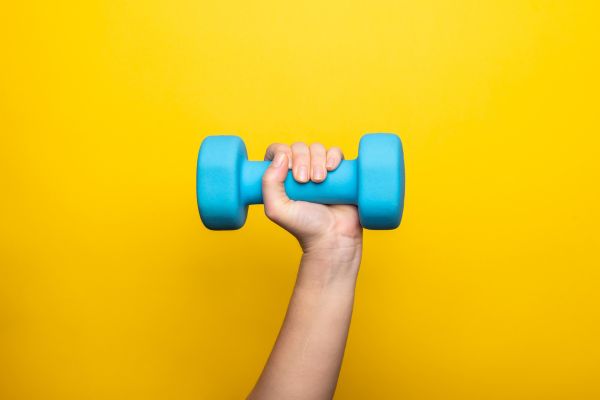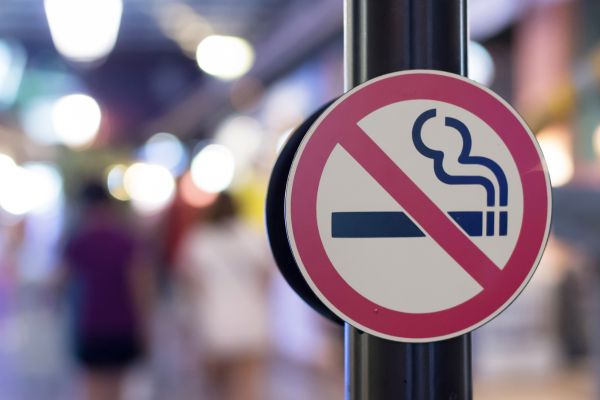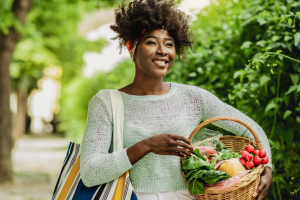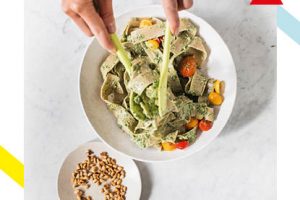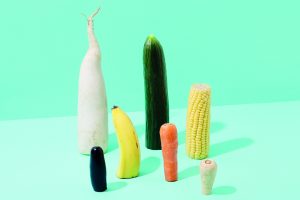6 surprising secrets to good bone health – from packing in the protein to avoiding stress

Did you know that half of all women over 50 will suffer a fracture at some point due to poor bone strength?
As adults, we each have 206 bones in our body. The health of our bones can have a huge impact on our lifestyle and longevity. In fact, a study by the American Academy of Neurology found that those people with the lowest bone density are 42% more likely to develop dementia than those with the densest bones.
As we age, our bones are affected by hormonal loss, genetics and nutrition. The strength of our bone tissue starts to naturally decrease – this increases our risk of osteoporosis and broken bones.
According to Dr Max Tuck, author of Love Your Bones, only 1 out of 3 people who suffer a broken hip can expect to resume a normal lifestyle once the bone has mended. The cost – both personal (difficulty exercising, anxiety about breaking further bones) and financial terms (perhaps loss of income through time off work) – can be devastating.
There’s a huge number of myths and common misconceptions out there concerning bone health. Let’s focus on some straight up – and sometimes surprising – facts on how to improve the condition of our bones and avoid future breaks…
1. Avoid stress
Researchers have found a link between stressful social relationships and bone problems in women. One particular study looked at the stress levels of 11,000 postmenopausal women and found that those who reported high levels of social stress had lower bone density six years later.
The tricksy hormone cortisol is to blame – when stressed, we release more cortisol, which causes our body to release calcium from bones and teeth, to help restore balance. Over time, this can lead to brittle, porous bones.
2. Do the right exercises
Muscle resistance exercises (such as weights, press-ups and swimming) and weight bearing activities (such as running and walking) are key. Even climbing stairs rather than taking the lift, can help you build strong bones and slow bone loss.
The NHS recommend at least 150 minutes of moderate intensity activity a week or 75 minutes of vigorous intensity activity a week. The Royal Osteoporosis Society recommends short busts of exercise, such as running then jogging, or jogging then walking.
Balance and co-ordination activities such as yoga, pilates and tai chi are particularly good, too. Various poses and movements can be incorporated into sessions that target and strengthen common fracture sites (hip, spine, femur).
Just remember, people who exercise and maintain good balance are less likely to fall in old age – and fewer falls means less chance of broken bones.
3. Boost your protein
“Protein is an essential nutrient for bone health” – that’s the key takeaway point from a report by the Nutrition Society. And it’s especially important for older women. It makes sense. After all, protein makes up about 50% of your bone’s volume and around 33 % of its mass.
It’s also important for muscle maintenance, which helps support our bone structure.
“You should aim to consume two to three servings of protein each day as part of a healthy, balanced diet,” says the Royal Osteoporosis Society.
Good sources come from meat, fish, dairy, nuts, seeds, pulses, soya products and cereals.
Milk is a fantastic option, too – SuperNutrio’s high-protein cow’s milk contains double the protein of standard cow’s milk but with nothing added.
4. Check your vitamin D levels
Vitamin D plays an important role in helping our body use calcium. If we don’t get enough, or if our body fails to absorb it well, our risk of osteoporosis rises.
Postmenopausal women, adolescent girls, athletes and people with a lactose intolerance may need supplementation, as may those on certain medications (check with your GP).
Our skin makes vitamin D when it’s exposed to the sun, explains the Royal Osteoporosis Society. It’s also found in various foods. Aim for oily fish, such as salmon, trout and tuna, also mushrooms, eggs and fortified foods, such as milk and cereals.
5. Don’t rely on this one particular leafy green
Calcium is the main nutrient for bone health. According to the NHS, adults need around 700mg.
We’re often told that green leafy vegetables are a good source of calcium. That’s true but there’s one otherwise nutritious, green goodie that doesn’t make the list: spinach!
The NHS explains that although spinach contains lots of calcium, it shouldn’t be on our go-to list as a good source because “it also contains oxalate, which reduces calcium absorption.”
Of course another reliable source includes dairy products such as milk – and SuperNutrio cow’s milk is not only high in protein but has 80% more calcium than standard cow’s milk.
Other sources include soya beans, nuts bread made with fortified flour and fish where you eat the bones, such as sardines and pilchards.
6. Don’t smoke
The Office for National Statistics (ONS) reports that the number number of adult smokers in the UK has been declining since 2011. Currently, around 11.9% of adults in the UK – around 6 million people – smoke.
According to the National Centre or Smoking Cessation and Training, smoking “affects the metabolism of hormones, body weight, vitamin D levels, calcium absorption and blood circulation. It also increases oxidative stress, disrupting healthy bone resorption and formation, leading to osteoporosis.”
More research needs to be carried out concerning e-cigarettes, but a 2021 study found that people who vape have a 46% higher rate of fractures than people who don’t vape.
We’ll drink to that!
Drinking SuperNutrio milk is a great way to get more of the nutrients our body needs for healthy bones. It contains double the protein and has 80% more calcium than regular cow’s milk, but with nothing added. There’s just one ingredient: cow’s milk!
One serving of 250ml meets 70% of daily calcium needs, 54% of phosphorous needs and 17.5g of high-quality protein.
Enjoy it on its own, with cereal, in hot or cold drinks or as a handy ingredient.
Find out more about SuperNutrio’s milk range available at selected Tesco and Sainsbury’s, in store and online.






